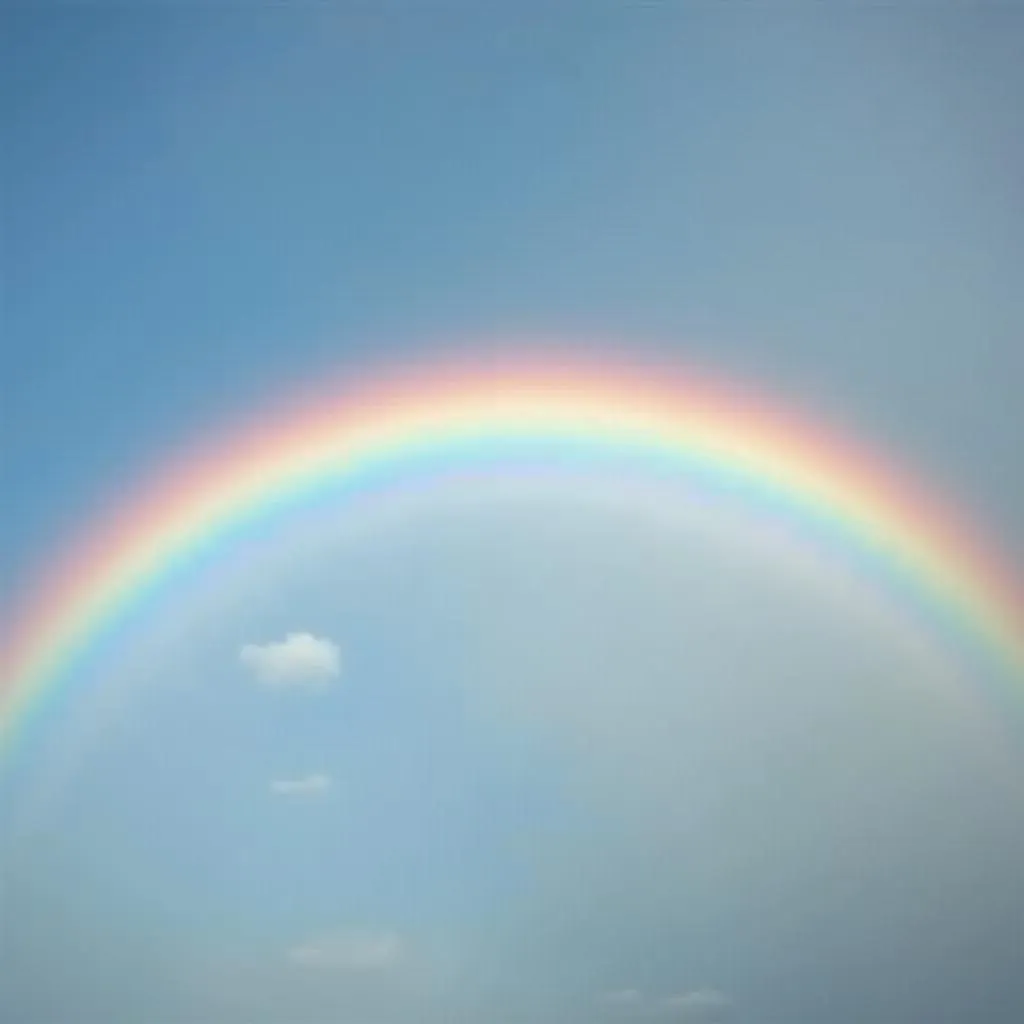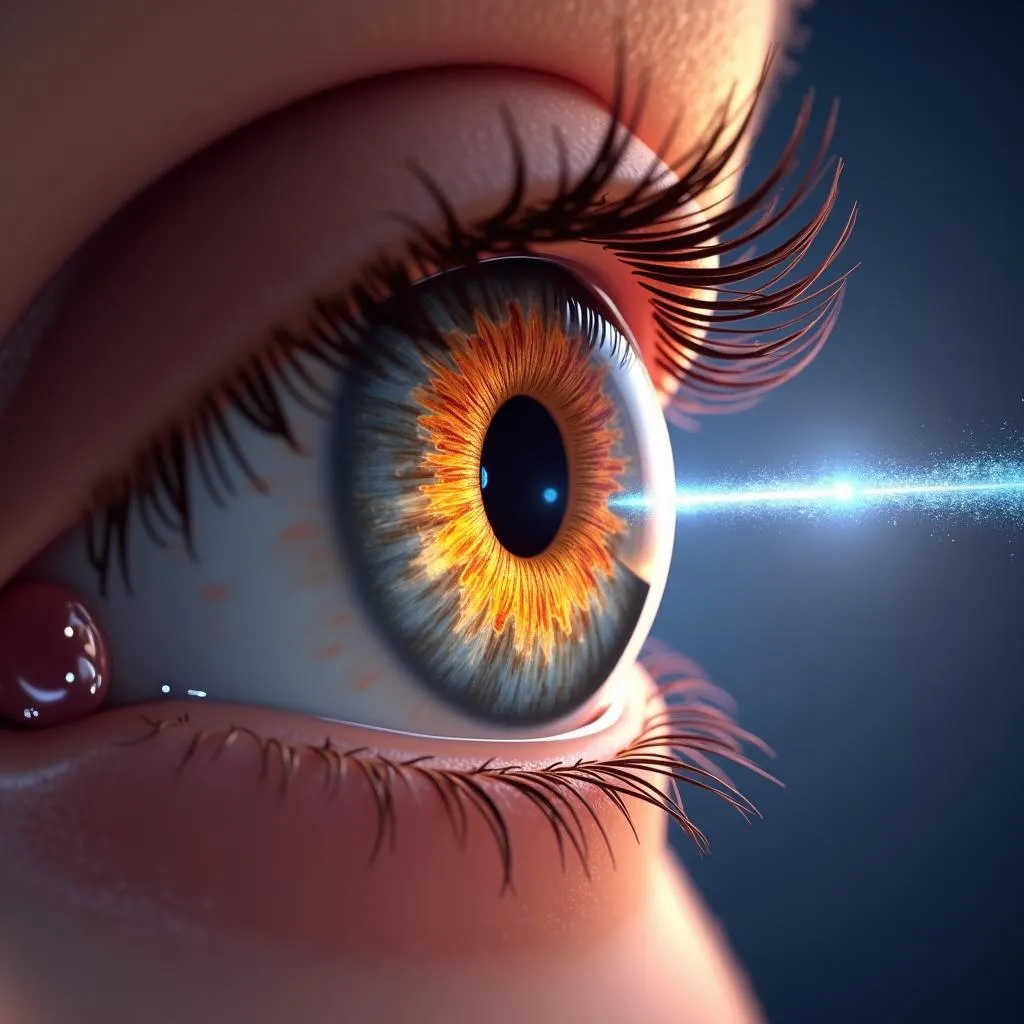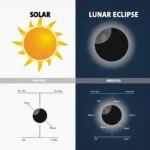We’ve all gazed up at rainbows, mesmerized by their fleeting beauty. These arcs of color, appearing like magic when sunlight dances through raindrops, have captivated cultures for centuries. But have you ever stopped to wonder, “Just how many colors are on the rainbow?”. It’s a question that seems simple, but the answer, as with many things in nature, is surprisingly nuanced.
Unveiling the Rainbow’s Palette: More Than Meets the Eye
The traditional answer, the one often taught to us in childhood, is that there are seven colors in the rainbow: red, orange, yellow, green, blue, indigo, and violet. This arrangement is often remembered by the acronym ROYGBIV. This seven-color concept is largely attributed to Isaac Newton, the renowned physicist, who, despite not being the first to propose a color spectrum, held significant influence in popularizing it.
 Newton's color wheel
Newton's color wheel
However, the reality is that the rainbow is a continuous spectrum of light, a seamless blend of hues with no hard divisions. Our human eyes, while incredible, have limitations. We perceive these gradual transitions as distinct bands of color, but in truth, there are countless shades existing between each named color.
Why Seven? The Intersection of Science and Culture
If the rainbow is a spectrum, why then do we cling to the idea of seven distinct colors? The answer lies at the intersection of science and culture. Newton, while observing the rainbow through the lens of physics, was also influenced by prevailing philosophies and beliefs. Seven held significance in ancient Greek thought, representing completeness and harmony, and it resonated in various fields – seven musical notes, seven days in a week. This cultural significance likely played a role in Newton’s decision to define the spectrum as having seven colors.
 Full rainbow color spectrum
Full rainbow color spectrum
The Rainbow Through Different Lenses: Perception vs. Reality
It’s important to remember that color perception is subjective. What one person identifies as a distinct shade of blue, another might perceive as bordering on green. Cultural influences also play a role. Some cultures don’t have separate words for blue and green, while others have even more nuanced color distinctions.
 Human eye and color perception
Human eye and color perception
Exploring the Rainbow’s Secrets: Beyond the Visible Spectrum
The rainbow, a symbol of wonder, reminds us that there’s often more to discover beyond what’s immediately apparent. So, the next time you’re lucky enough to witness a rainbow’s fleeting beauty, remember that you’re looking at an infinite spectrum of color, a testament to the wonders of nature and the fascinating complexities of human perception.
Frequently Asked Questions about Rainbow Colors
1. Why does a rainbow appear as an arc?
Rainbows appear as arcs because of the way sunlight refracts (bends) through raindrops. This bending of light creates a circular arc of colors.
2. Can you create a rainbow artificially?
Yes, you can create a rainbow using a garden hose on a sunny day. Stand with your back to the sun and spray a fine mist of water. You should see a rainbow appear in the mist.
3. Are there rainbows at night?
While rare, rainbows can occur at night. A “moonbow” is created when moonlight refracts through water droplets.
4. Why are rainbows often associated with hope?
Across various cultures, rainbows symbolize hope, promise, and new beginnings, possibly stemming from their appearance after a storm.
5. Can you see all the colors of the rainbow every time?
The visibility of all rainbow colors depends on factors like the sun’s position and the density of water droplets. Sometimes, some colors might appear fainter or even absent.
Need Help Picking Your Perfect Colors?
Contact us today at 0373298888 or email us at [email protected]. You can also visit our showroom at 86 Cầu Giấy, Hà Nội. Our color experts are here to help you create a space as vibrant and unique as you are.

